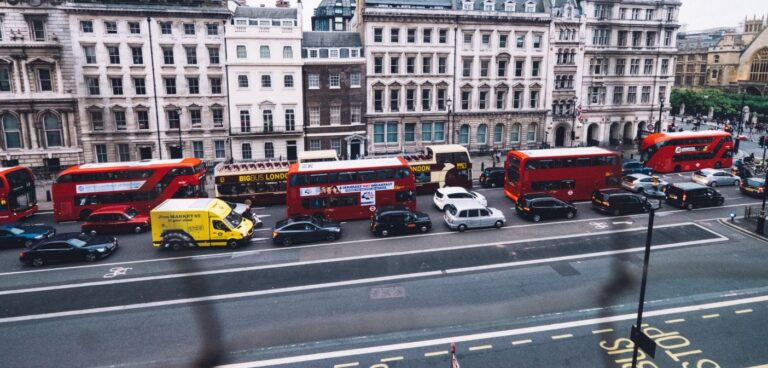Emissions standards for heavy-duty vehicles driving through Greater London have led to more widespread use of clean trucks, which is likely providing air-quality benefits across much of England and Wales, according to a new report from Inrix and the Environmental Defense Fund (EDF) Europe.
Vehicles operating in London’s Ultra Low Emission Zone (ULEZ), which launched in 2019, must meet certain emissions standards or pay a fine. In March 2021, London mayor Sadiq Khan tightened the emissions restrictions of a much larger Low Emission Zone that covers most of Greater London to require commercial trucks and similar vehicles over 3.5 tonnes and buses and vans over five tonnes operating there to meet the ULEZ emissions standards for nitrogen oxides. Together, the two zones comprise Greater London’s clean air zone (CAZ).
Heavy-duty vehicles that drive through Greater London’s CAZ travel an average of twice as much distance outside of it as they do inside of it, according to the EDF and INRIX analysis, giving the regulation a wider geographic impact. With heavy fleet turnover because of the restrictions, the analysis estimates that up to 18 million more people may see air-quality benefits from the CAZ.
At the end of 2020, more than 92% of heavy-goods vehicles that would drive through London met the new standards, according to the EDF. In April, the UK recorded its highest ever monthly volume of new vans registered, according to the Society of Motor Manufacturers and Traders. That fleet turnover extends the pollution reduction benefits well beyond the city centre, the EDF analysis found, based on traffic data from September 2019 that reflected a pre-pandemic routine.
“Although these zones are deployed locally, our new data analysis reveals how the true ‘reach’ of clean air zones goes far beyond their boundary – likely bringing air-quality benefits to millions of people in London and across the country,” said Oliver Lord, head of policy and campaigns for EDF.





